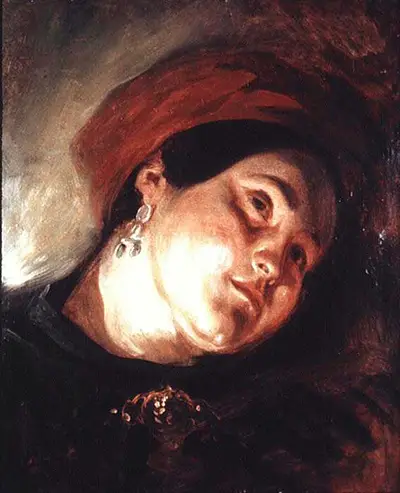 Buy Art Prints Now
Buy Art Prints Nowfrom Amazon
* As an Amazon Associate, and partner with Google Adsense and Ezoic, I earn from qualifying purchases.
Some have argued that this portrait of a woman was completed in preparation for one of Delacroix's masterpieces - The Death of Sardanapalus. It may also have been of Frédéric Villot's wife, Pauline, though both theories have never been conclusively proven.
Delacroix was rumoured to be particularly fond of this woman, if it is who we think it is, even though he was also a close friend of her husband. He would produce portraits of friends from time to time and gift them and that may have happened here. The lighting is dramatic, as if painted at night or in very low light and this helps to get across some similarities with the work of Rubens, though we do know that Delacroix also specifically studied the portraits of Titian as well. Delacroix was involved in several different art movements but is most famous for his Romanticist approach and within this portrait we find sweeping brushstrokes and elements of personal flourishes which are closely aligned to that group, as is the use of bright tones of red.
This painting can be found in the collection of the Bristol Museum & Art Gallery, making it one of the few Delacroix artworks to be found within a provincial British gallery. It is believed that help was provided by charitable organisations in order to fund the purchase, as now occurs more and more frequently. Often this can be the result of a private individual attempting to sell a piece privately, but with the state stepping in in order to avoid the painting then being sold overseas. Several countries now follow a similar process in order to protect the cultural collections of their nation, whilst also ensuring that their attraction to foreign tourists is continued into the future. With an increasing number of collectors coming from oil-rich nations, the art market is now particularly competitive and truly global for the first time.
As with most provincial museums and galleries, the Bristol Museum & Art Gallery provide a strong focus on local artists as well as some national figures, but tend not to concern themselves with those from abroad too much. They have a good display of pottery, silverware, ceramics and glassware too, but the main highlights of their collection of paintings include some notable Renaissance artists such as Lucas Cranach, Giovanni Bellini as well as British artists such as Thomas Gainsborough and John Constable. All in all, much to see here and it is possibly the finest gallery in the South West of England.



